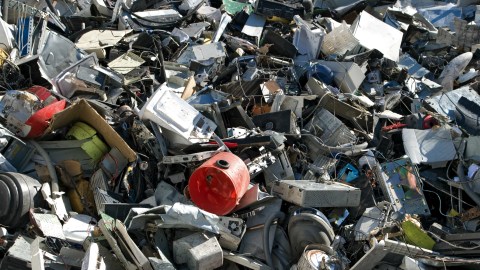Failing to Properly Dispose of E-Waste Leads to Public Health Risks

Your gadgets, much like mid-90s Disney animated films about monarchical lions, experience a distinct circle of life. But while Simba’s cyclical journey ends with musical crescendos, your newly replaced laptop, tablet, or desktop makes a one-journey journey to the local landfill. Lauren Walker over at Newsweek says more people need to learn how to properly dispose of their old stuff and quit letting old gadgets pollute the environment.
“According to the EPA, the U.S. generated nearly 3.5 million tons of electronic waste (e-waste) in 2012. Among those items, Americans recycled 40 percent of computers, 17 percent of televisions and 10 percent of cellphones. So, what happened to the rest of the outdated devices?
Some people (possibly yourself included) let old electronics collect dust in their homes, or handed them off to family or friends to use. But a large portion of e-waste ultimately winds up in landfills, which can have devastating effects.”
It’s not just chips and plastics you’re throwing out. A lot of your old gadgets contain corrosive and dangerous chemicals such as lead, arsenic, beryllium and mercury. Naturally, it’s not good when these chemicals come into contact with the environment and wildlife. Walker employs the example of mercury poisoning that happens when humans eat fish and other animals that have been contaminated by these chemicals. The consequences can be lethal.
So before you toss out that old DVD player (because you’ve now got The Lion King on your iPad), research the greenest, safest way to dispose of it. The gadgetry circle of life could become threatened if we don’t follow through with our old devices:
“E-waste recyclers offer one way to respond to this problem. You can drop off your used electronics at many large retailers like Best Buy, Home Depot and Staples, many of which have in-store collection boxes managed by Call2Recycle. According to the company, their collection boxes exist within 10 miles of 89 percent of North American consumers.
The EPA provides tips on reducing and recyling e-waste, and has a list of state and regional e-waste recycling programs.”
Read more at Newsweek
Photo credit: Huguette Roe / Shutterstock





